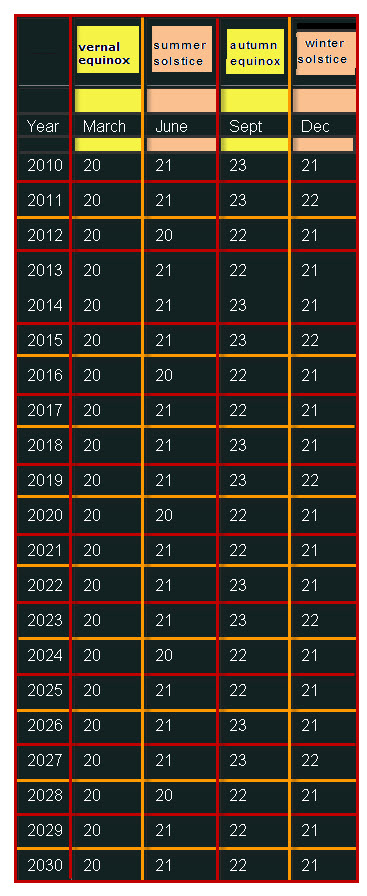Times of sunrise and sunset change daily throughout the year as Earth revolves  around the Sun. Changes in seasons are linked to the regular changes in the hours of daylight and darkness throughout the ear.
around the Sun. Changes in seasons are linked to the regular changes in the hours of daylight and darkness throughout the ear.
The equatorial region (tropics) between the Tropic of Cancer and the Tropic of Capricorn has about an equal amount of daylight and darkness each day of the year.
For areas north or south of the tropics, the number of hours of daylight are greatest around the start of the local summer season and shortest around the start of the local winter season.
Regardless of the location, on equinox, the hours of daylight and darkness are equal.
During Earth’s yearly solar trip of about 588 million miles (940 million km), Earth’s axis points in the same direction, as shown in the diagram. Notice that in position A, Earth’s North Pole points more toward the Sun than does its South Pole. In this position, the Northern Hemisphere starts its summer season and the Southern Hemisphere starts its winter season. P osition C, is the reverse with winter in the Northern Hemisphere and summer in the Southern Hemisphere.
osition C, is the reverse with winter in the Northern Hemisphere and summer in the Southern Hemisphere.
In position B, the diagram shows Earth dark because it is the side facing away from the Sun. In this position, the Northern and Southern hemispheres receive the same out of sunlight. Even so, as Earth moves from position A to position B, its Northern Hemisphere is going from summer into autumn, and the Southern Hemisphere is gong from winter into spring. The opposite is true for position D, where the Northern Hemisphere is changing from winter into spring, and the Southern Hemisphere is changing from summer into autumn.
Position D: Spring Equinox equal daylight and darkness
Position A: Summer Solstice longest day
Position B: Autumn Equinox equal daylight and darkness
Position C: Winter Solstice shortest day
The dates for these positions in the Northern Hemisphere are listed on the chart.
 |
Janice VanCleave’s Solar Systems: Mind-Boggling Experiments You Can Turn Into Science Fair Projects |